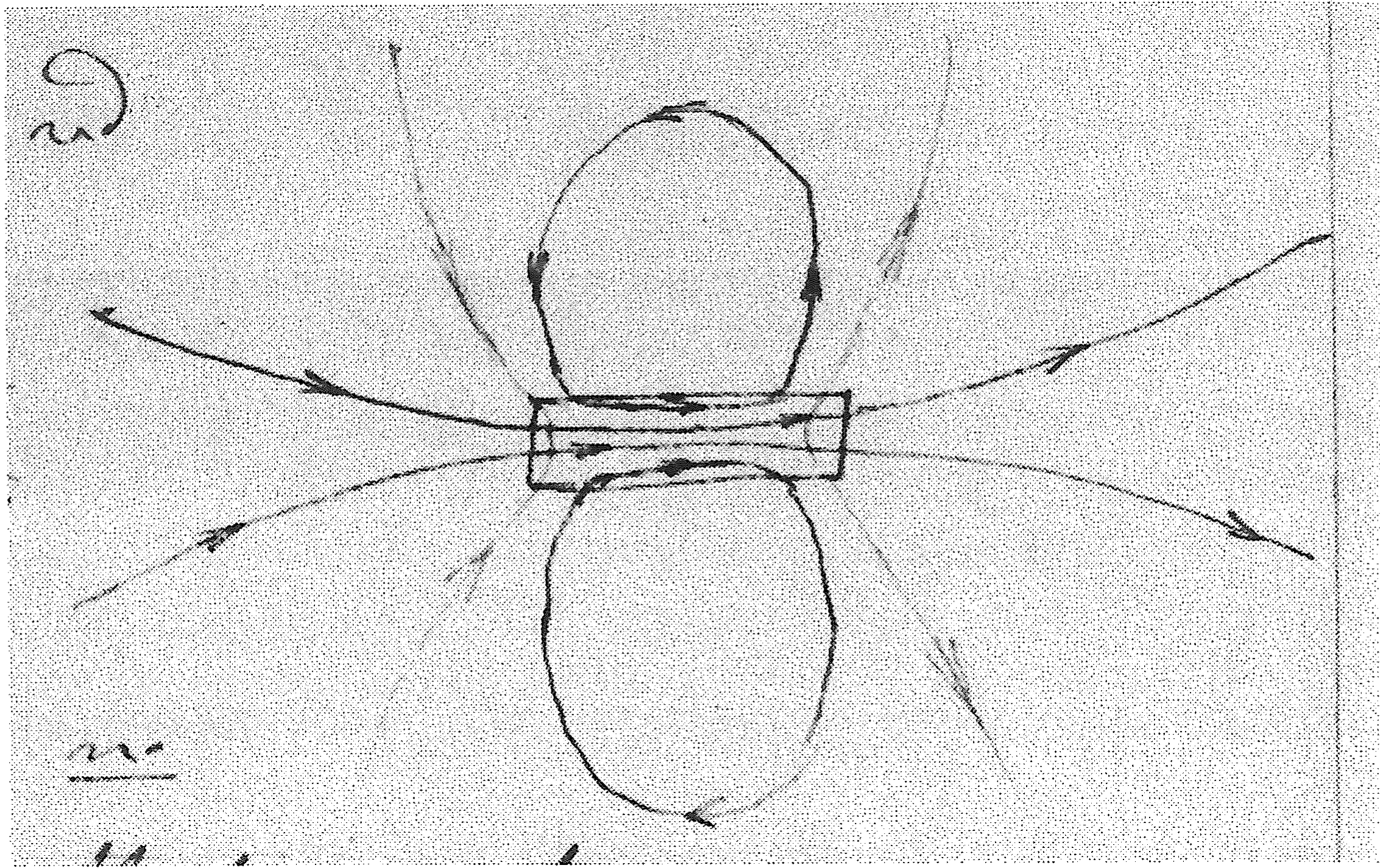Faraday to William Whewell 29 January 1853
Royal Institution | 29 Jany 1853
My dear Sir
You frighten me; for if I have not conveyed to you a clear idea of my meaning by my papers, how can I expect I have succeeded in relation to others. And then how obscure & confused my three last papers must have seemed1. As you have thought it worth while to look at them once I hope you will again:- for a great deal must have appeared to you to be utter nonsense, which I trust will now have a new meaning & some value in your eyes. My ideas of lines of force as closed curves passing through the magnet is, that they pass from end to end, or in a direction coinciding therewith: every line of force, wherever it may

issue from the regular magnet, is within it at the magnetic equator; and passes through its section at that place. The black lines represent my curves not the red lines: the latter could not form continuous lines of force because their polarities would be opposed at the poles of the magnet. I recognize no poles or centres of action in that respect. It is curious that I do not find in all my figures one in which the lines of force are marked within the magnet. Of course all those given by filings could give only the direction of the external parts of the lines. But in (31162) I speak of the full action of the moving internal radius wire alone (b.d. fig 6. par 3095. 30983) and in 31174, say that the curved portions of the lines are continuations of the outer portions absolutely unchanged in their nature: which would not be true of the red lines on the previous page, where the polarity is suddenly inverted. In (31205) I compare the magnet to an Electromagnetic helix in regard to the direction of the lines; a comparison further illustrated by figg. 5 and 20 of the plate. In 32766 of the paper on the physical lines of force I compare it to a Voltaic battery immersed in a decomposable or conducting fluid; & to a Gymnotus surrounded by water; and I am in hopes the Paragraphs 3277. 3278. 3283. 3287. 3288. 32957 will have a new interest to you, now that you will have caught my idea. 3271. 32658. &c. 32319. also: in fact I think you will be induced to read the papers again.
Dr. Rogets10 determination of the forms of the lines of magnetic force, is given in the Journal of the Royal Institution 1831, vol I, page 31111: and his further account of them in the Treatise on Magnetism published in the Library of Useful Knowledge Natural Philosophy vol. II, page 19 of the particular treatise12. Wheatstone promised to shew me a folio volume containing demonstrations & forms by a German author but has never kept his word[.]
In a few days I hope to send you Newtons testimony in favour of physical lines of force as regards Gravity13. If that idea is necessary to gravitation, how much more so it must be in relation to the dual powers of Magnetism and Electricity which act in curve lines, and which in the case of a magnet act at all times and when only a single system is concerned[.]
Ever My dear Sir | Truly Yours | M. Faraday
Revd. Dr. Whewell | &c &c &c
Address: Revd. Dr. Whewell | &c &c &c | Trinity College | Cambridge
Bibliography
FARADAY, Michael (1852b): “Experimental Researches in Electricity. - Twenty-eighth Series. On Lines of Magnetic Force; their definite character; and their distribution within a Magnet and through Space”, Phil. Trans., 142: 25-56.
FARADAY, Michael (1852c): “Experimental Researches in Electricity. - Twenty-ninth Series. On the employment of the Induced Magneto-electric Current as a test and measure of Magnetic Forces”, Phil. Trans., 142: 137-59.
FARADAY, Michael (1852d): “On the Physical Character of the Lines of Magnetic Force”, Phil. Mag., 3: 401-28.
FARADAY, Michael (1855b): “On some Points of Magnetic Philosophy”, Phil. Mag., 9: 81-113.
ROGET, Peter Mark (1831): “On the Geometric Properties of the Magnetic Curve, with an account of an Instrument for its Mechanical Description”, J. Roy. Inst., 1: 311-9.
TURNBULL, H.W. (1961): The Correspondence of Isaac Newton, Volume III, 1688-1694, Cambridge.
Please cite as “Faraday2631,” in Ɛpsilon: The Michael Faraday Collection accessed on